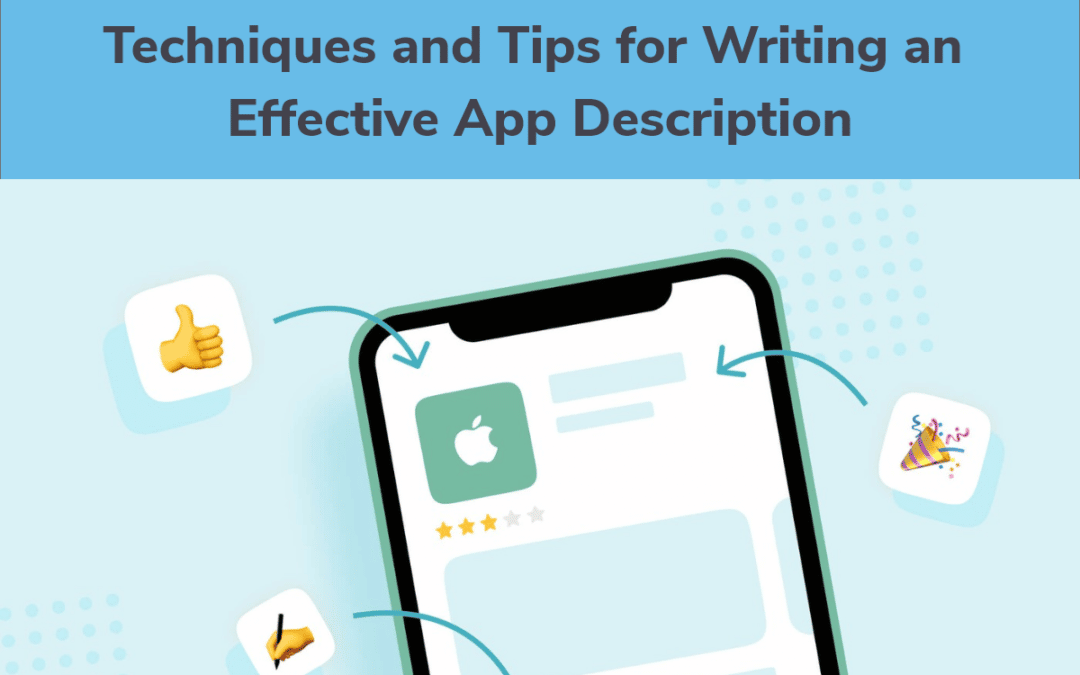The app description is the most prominent text element on your app’s product page. It provides a perfect opportunity for you to showcase the benefits and features of the app. With users spending as little as a few seconds on your app page, making the app description effective and engaging is imperative to gain more app traffic.
The correct placement of keywords in the app description is crucial for a high ranking on the app store result page. Since the app store algorithms focus on the keywords in your app content to rank the search results.
Short and long: Play store app description format
Short Description
- A short description can have up to 80 characters.
- It is an important text element that highlights the best app feature.
- It can include some of the most relevant keywords to optimize the search results.
- It has to be concise, clear, and convincing to influence more downloads.
- Google Play allows you to use emojis to make the short description more attractive.
Long Description
- A Long Description can have up to 4000 characters.
- Remember to use the app’s full name and the relevant keywords in the app’s long description.
- Begin with the app’s unique features and achievements that will encourage the user to download.
- Do not use the keywords too often; it can negatively impact the app visitor.
- Write in short paragraphs with clear bullet points in understandable language.
Nine best tips to write an effective app description
Keyword Placement
Keyword research is the first step in writing an effective app description. Google Play’s search algorithm looks for the keywords in the description.
With space for 4,000 characters, the app’s long description can include lots of keywords, so make sure you have the relevant list of keywords that will result in an enhanced app search results.
Structure the app description.
The allowed 4000 characters slot in the long description has to be sectioned carefully to display the key features. To efficiently utilize the app description space. Break this as follows:
- An impressive introduction.
- The Feature Section.
- The Social Proof Section.
- The Technical Requirements Section.
- The Contact Details Section.
Make an exciting start.
The start of the an impressive app description should be winning and interesting. Begin with the app’s unique selling point (USP). Include the brand’s awards and achievements and showcase the app’s highlights and benefits that differentiate it from competitors.
Include a Feature Section.
The feature section re emphasizes the app’s highlights in the app description. Explain the values and benefits that the user can gain by using your app. Place the relevant keywords and make them into a storyline. Connect your sentences in a logical order in an interesting language to hold the user’s attention.
Include social proof in the long description.
Put on display the likeability and the positive reviews of the app. This instils trust and urges the user to download the app. In addition, you can include:
- The app’s broad user base.
- The awards and success story.
- Store rankings.
- Press coverages.
State the technical requirements.
Mention the technical requirements for the app’s smooth functioning. For example, mention the compatible device types, the paid features, the available languages, and required permissions.
Here’s our recommended article on app ranking tracker .
Add contact details and the app’s portfolio.
Mention the accurate contact details at the end of the Description. It lets the user get in touch with you when an issue or query arises. Moreover, You should also include hyperlinks and the app’s portfolio to make a credible impression.
Format and align the app description.
It is essential to present a visually effective description for the user. Split the description into short paragraphs. Use rich formatting and align the text in a logical sequence. You can use HTML tags as visual highlights. Add catchy headlines for each paragraph. Use simple emojis that do not distract the user from the content.
Check for mistakes and proofread the App Description.
Make sure the App Description is properly structured without grammatical or syntactic errors. Replace complex jargons with simple language. Use proofreading tools that are available online to create a perfectly readable and accessible long description.
The app description is the most important element on the app’s page. Because it speaks about its functionality and values. So, make it convincing and understandable for all types of users, thus influencing more app downloads. Review and align the app description with the other elements to make the best impression.
Here’s our google play store ranking factors guide.

